
The Majestic Slieve League Cliffs: Ireland's Coastal Wonder
Discover Ireland’s towering Slieve League Cliffs, among Europe's highest sea cliffs, offering awe-inspiring views, thrilling hikes, and rich local culture in County Donegal.
The Slieve League Cliffs, located in County Donegal, Ireland, are among the highest sea cliffs in Europe, standing almost three times taller than the Cliffs of Moher. These towering cliffs, reaching heights of nearly 600 meters, offer breathtaking views of the Atlantic Ocean and the rugged coastline that stretches out below. The cliffs are a haven for hikers and nature enthusiasts who are drawn to the dramatic scenery and the sense of awe that comes from standing on the edge of such a natural wonder. Visitors to Slieve League can take advantage of several viewing points, the most popular being Bunglass Point, which provides panoramic vistas of the cliffs and the sea. The more adventurous can embark on the One Man's Pass, a narrow and often windy trail that offers an exhilarating hike with some of the most stunning views imaginable. The cliffs are also rich in local history and mythology, with stories of ancient settlements and legends that add a layer of mystique to the experience. For those looking to immerse themselves in the local culture, nearby villages like Carrick and Teelin offer a glimpse into traditional Irish life. Here, visitors can enjoy local cuisine, music, and hospitality, making the trip to Slieve League not just about the natural beauty but also about connecting with the people and stories that make this part of Ireland so special. Whether you're seeking adventure, tranquility, or a bit of both, the Slieve League Cliffs provide an unforgettable destination that captures the essence of Ireland's wild and unspoiled landscape.
Local tips in Slieve League Cliffs
- Wear sturdy hiking boots and dress in layers, as the weather can change quickly.
- Visit early in the morning or late in the afternoon to avoid crowds and get the best light for photography.
- Check the weather forecast before you go, as fog and rain can limit visibility.
- Consider hiring a local guide for a more informative and safe hiking experience.
- Bring a packed lunch and plenty of water, as there are limited facilities on the cliffs.
The Majestic Slieve League Cliffs: Ireland's Coastal Wonder
The Slieve League Cliffs, located in County Donegal, Ireland, are among the highest sea cliffs in Europe, standing almost three times taller than the Cliffs of Moher. These towering cliffs, reaching heights of nearly 600 meters, offer breathtaking views of the Atlantic Ocean and the rugged coastline that stretches out below. The cliffs are a haven for hikers and nature enthusiasts who are drawn to the dramatic scenery and the sense of awe that comes from standing on the edge of such a natural wonder. Visitors to Slieve League can take advantage of several viewing points, the most popular being Bunglass Point, which provides panoramic vistas of the cliffs and the sea. The more adventurous can embark on the One Man's Pass, a narrow and often windy trail that offers an exhilarating hike with some of the most stunning views imaginable. The cliffs are also rich in local history and mythology, with stories of ancient settlements and legends that add a layer of mystique to the experience. For those looking to immerse themselves in the local culture, nearby villages like Carrick and Teelin offer a glimpse into traditional Irish life. Here, visitors can enjoy local cuisine, music, and hospitality, making the trip to Slieve League not just about the natural beauty but also about connecting with the people and stories that make this part of Ireland so special. Whether you're seeking adventure, tranquility, or a bit of both, the Slieve League Cliffs provide an unforgettable destination that captures the essence of Ireland's wild and unspoiled landscape.
When is the best time to go to Slieve League Cliffs?
Iconic landmarks you can’t miss
Sliabh Liag Viewing Platform
Discover the stunning Sliabh Liag Viewing Platform, where breathtaking cliffs meet the Atlantic Ocean in County Donegal, Ireland.
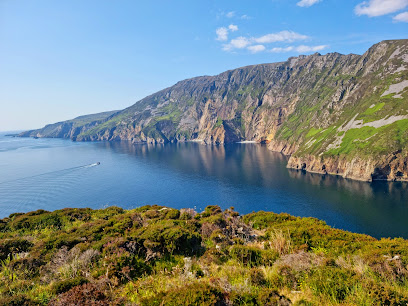
Glencolumbkille Folk Village
Discover the enchanting Glencolumbkille Folk Village, a living museum showcasing Ireland's rich cultural heritage through reconstructed thatched cottages.

Largy Viewpoint
Explore the stunning Largy Viewpoint in County Donegal, where breathtaking coastal panoramas and serene landscapes await your discovery.
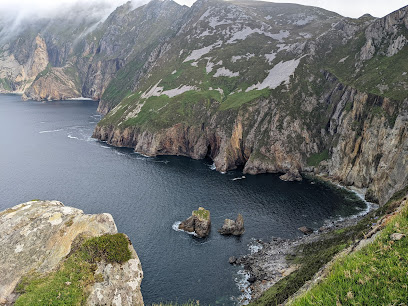
Slieve League Car Park
Experience the breathtaking beauty of the Slieve League cliffs from the Slieve League Car Park, your gateway to stunning coastal views and thrilling hikes.

Sliabh Liag Cliff Experience & Visitor Centre
Experience the breathtaking heights of Sliabh Liag Cliffs, Ireland's highest sea cliffs, and explore the wonders of nature and culture.

Secret Waterfall
Explore the hidden beauty of Secret Waterfall in Co. Donegal, a tranquil escape surrounded by lush landscapes and breathtaking views.

Sliabh Liag Boat Trips
Explore the breathtaking Sliabh Liag cliffs on unforgettable boat tours, marvel at stunning landscapes, and experience the rich wildlife of Donegal's coast.

Bunglass Point
Discover the stunning natural beauty of Bunglass Point in Co. Donegal, where dramatic cliffs meet the wild Atlantic Ocean for an unforgettable scenic experience.
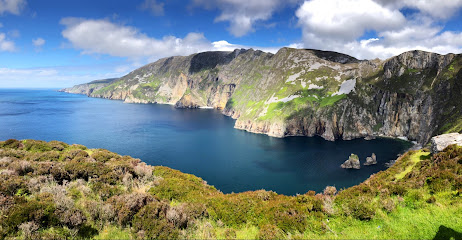
Sliabh Liag
Experience the breathtaking views and rich history of Sliabh Liag, one of Europe’s highest sea cliffs, located in the heart of Donegal, Ireland.

Sliabh Liag Walk
Discover the stunning landscapes and breathtaking views of Sliabh Liag Walk, one of Europe's highest sea cliffs in County Donegal, Ireland.

The Pilgrim Path
Explore the breathtaking Pilgrim Path in Co. Donegal, where stunning cliffs meet lush landscapes for an unforgettable hiking experience.

Wild Atlantic Way Discovery Point @Málainn Bhig(Malin beg)
Explore the breathtaking cliffs and golden sands of Máilainn Bhig, a must-see destination on Ireland's Wild Atlantic Way.
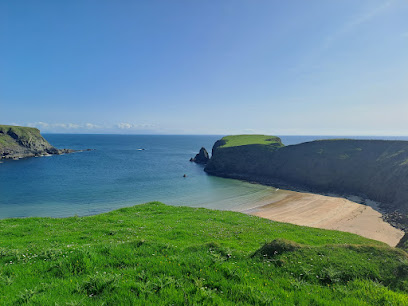
Glencolumbkille Beach
Experience the breathtaking beauty and rich heritage of Glencolumbkille Beach, a serene escape on Ireland's stunning coastline in Co. Donegal.

Slieve League View Walk
Explore the breathtaking Slieve League View Walk in County Donegal, where towering cliffs meet the wild Atlantic and nature's beauty reigns supreme.

Glenlough Bay
Experience the untouched beauty and breathtaking views of Glenlough Bay, a premier hiking area in County Donegal, Ireland.

Unmissable attractions to see
Fairy Bridges
Discover the magical Fairy Bridges in Bundoran, a stunning coastal attraction filled with breathtaking views and rich folklore in County Donegal.

Saint John's Point Lighthouse
Discover the stunning Saint John's Point Lighthouse in Donegal, where breathtaking coastal views meet rich maritime history.

Crohy Head Sea Arch
Experience the breathtaking beauty of Crohy Head Sea Arch in County Donegal, a stunning natural wonder on Ireland's dramatic coastline.

The Pilgrim Path
Discover breathtaking views and rich cultural heritage along The Pilgrim Path in County Donegal, a must-visit hiking destination.
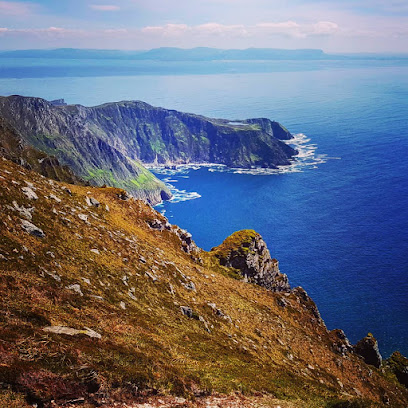
Teelin Pier
Experience the breathtaking views and serene atmosphere at Teelin Pier, a picturesque fishing destination in County Donegal.
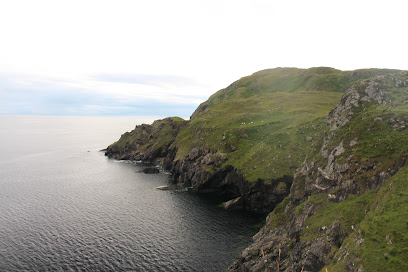
Lighthouse Steps
Experience the breathtaking beauty of Lighthouse Steps in Co. Donegal, where dramatic cliffs meet the majestic Atlantic Ocean.

Glencolumbkille Beach
Experience the breathtaking beauty and serene charm of Glencolumbkille Beach in County Donegal, a must-see destination on Ireland's Wild Atlantic Way.

Glenlough Bay
Experience the breathtaking coastal beauty and serene hiking trails of Glenlough Bay, a hidden gem in County Donegal, Ireland.

Clocha na hEireann
Discover the breathtaking beauty of Clocha na hEireann in Glencolumbkille, Co. Donegal - a must-visit tourist attraction on Ireland's west coast.

Rotten Island Lighthouse
Discover the stunning views and maritime history at Rotten Island Lighthouse in Killybegs Harbour, a must-visit for nature and history lovers.
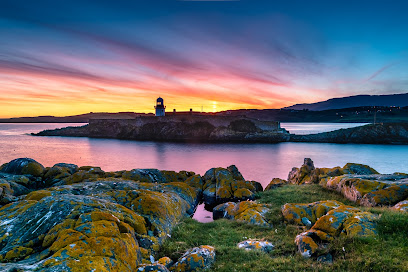
Slieve League
Discover the breathtaking beauty of Slieve League, one of Europe's highest sea cliffs, offering stunning views and unforgettable hiking experiences.

Pilgrim's Path (Start Point)
Discover the serene beauty of the Pilgrim's Path in County Donegal, a must-visit hiking area for nature lovers and adventure seekers.

Sea Arches
Explore the breathtaking Sea Arches in Tororragaun, Co. Donegal, where nature's artistry meets the rugged beauty of the Irish coast.

Essential places to dine
Ireland
Explore Ireland's breathtaking landscapes and vibrant culture: from the Cliffs of Moher to lively city streets filled with history.

Lough Eske Castle
Discover the enchanting beauty and luxurious comfort of Lough Eske Castle in County Donegal - a perfect retreat for relaxation and exploration.

Sliabh Liag Viewing Platform
Experience breathtaking views at Sliabh Liag Viewing Platform—one of Europe's highest sea cliffs in beautiful County Donegal.

The Rusty Mackerel
Discover The Rusty Mackerel: A charming bar in Co. Donegal offering stunning views, delicious food, and authentic Irish hospitality.
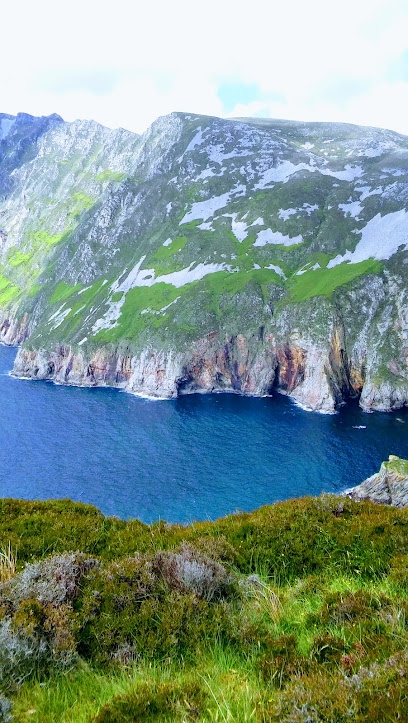
Tara Hotel
Experience comfort and authentic Irish cuisine at Tara Hotel in Killybegs, your gateway to the stunning landscapes of County Donegal.

Seaview Tavern
Experience coastal charm at Seaview Tavern in Co. Donegal - your go-to spot for seafood delights and warm hospitality.

Killybegs seafood shack
Experience fresh Atlantic flavors at Killybegs Seafood Shack, where local catches meet charming coastal views in Ireland's fishing capital.

Slieve League
Explore Slieve League's breathtaking sea cliffs in County Donegal—one of Europe's highest and most scenic coastal destinations.

The Central Hotel Donegal
Discover unparalleled comfort at The Central Hotel Donegal – your perfect base for exploring the beauty of County Donegal.

The Driftwood
Discover The Driftwood in Rosses Point: where traditional Irish cuisine meets breathtaking coastal views.

The Nesbitt Arms Boutique Hotel
Experience comfort and culture at The Nesbitt Arms Boutique Hotel - your perfect getaway in scenic County Donegal.

The Olde Glen Bar, Restaurant & Bia Box
Discover The Olde Glen Bar & Restaurant in Donegal - where traditional Irish charm meets modern culinary delights.

Bay View Hotel
Discover comfort and stunning coastal views at Bay View Hotel in Killybegs - your perfect retreat in Donegal.

The Lobster Pot
Experience fresh seafood delights at The Lobster Pot in Burtonport, where every dish tells a story of Ireland's rich maritime heritage.

The Rusty Nail
Discover the heartwarming atmosphere and authentic flavors at The Rusty Nail pub in Urris, Co. Donegal - A true taste of Ireland!

Markets, malls and hidden boutiques
Lough Eske Castle
Discover the enchanting Lough Eske Castle, a five-star hotel blending history, luxury, and breathtaking landscapes in County Donegal, Ireland.

Sliabh Liag Viewing Platform
Experience the breathtaking beauty of Sliabh Liag Viewing Platform, one of Ireland's highest sea cliffs, with stunning vistas and rich history.

Assaranca Waterfall (Eas a' Ranca)
Experience the breathtaking beauty of Assaranca Waterfall, a stunning natural attraction nestled in the heart of Co. Donegal, Ireland.

Fairy Bridges
Discover the breathtaking Fairy Bridges in County Donegal, a must-see tourist attraction blending natural beauty and local folklore.

Glencolumbkille Folk Village
Explore the enchanting Glencolumbkille Folk Village, where Irish history and folklore come to life in a stunning natural setting.

Slieve League
Discover the awe-inspiring beauty of Slieve League, where dramatic cliffs meet the roaring Atlantic, creating an unforgettable adventure in Donegal.

Slieve League Car Park
Discover the breathtaking Slieve League Car Park, your gateway to Ireland's stunning sea cliffs, walking trails, and rich cultural heritage.

Sliabh Liag Cliff Experience & Visitor Centre
Experience breathtaking views and rich heritage at Sliabh Liag Cliff Experience & Visitor Centre, one of Ireland's highest sea cliffs.

Caves of Maghera
Discover the breathtaking beauty and intriguing legends of the Caves of Maghera, a must-see natural wonder on Ireland's stunning coast.

Secret Waterfall
Unwind at Secret Waterfall, a breathtaking hidden gem in Co. Donegal, where nature's beauty meets serene tranquility.
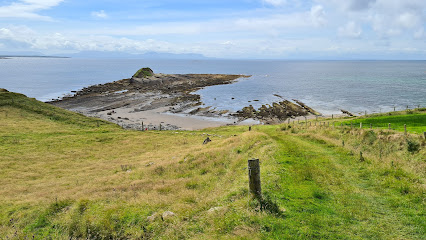
Tí Linn Cafe
Experience the charm of Tí Linn Cafe in Donegal, where delicious homemade treats meet stunning views and local crafts in a cozy atmosphere.

Slieve League B&B
Explore the breathtaking beauty of Donegal while enjoying a cozy stay at Slieve League B&B, your gateway to the stunning Slieve League Cliffs.

Triona Donegal Tweed Center
Discover authentic Donegal tweed at Triona Donegal Tweed Center in Ardara, where tradition meets style in a charming Irish setting.

Magee of Donegal
Discover the authentic charm of Irish fashion at Magee of Donegal, a heritage department store offering quality clothing and unique gifts.

Sliabh Liag Boat Trips
Discover the breathtaking cliffs and vibrant marine life of Sliabh Liag on an unforgettable boat trip along Ireland's stunning Wild Atlantic Way.

Essential bars & hidden hideouts
The Rusty Mackerel
Experience the charm of Irish hospitality at The Rusty Mackerel, where local brews and stunning coastal views await.

Smugglers Creek Inn
Experience the coastal charm of Donegal at Smugglers Creek Inn, a perfect spot for dining and relaxing by the stunning Atlantic Ocean.

Leo's Tavern
Discover the vibrant essence of Irish culture at Leo's Tavern, a beloved pub in Co. Donegal featuring live music and delightful traditional cuisine.

The Olde Glen Bar, Restaurant & Bia Box
Discover the authentic taste of Ireland at The Olde Glen Bar, Restaurant & Bia Box, where tradition meets modern culinary artistry in Donegal.

McCafferty's Bar, Donegal Town
Discover the vibrant atmosphere of McCafferty's Bar in Donegal Town, where local culture and friendly faces meet.

The Reel Inn
Experience authentic Irish hospitality at The Reel Inn in Donegal, where breathtaking views and local flavors come together in a cozy atmosphere.

Tí Linn Cafe
Experience the charm of Tí Linn Cafe, where delicious meals meet breathtaking views in the heart of Donegal.

Hegarty's Slieve League Lodge
Discover the charm of Hegarty's Slieve League Lodge, your cozy base for exploring Donegal's breathtaking landscapes and iconic cliffs.

Slieve League B&B
Discover the beauty of Donegal from the comfort of Slieve League B&B, your perfect retreat near majestic sea cliffs.

Andersons Boathouse Restaurant And Accommodation
Experience the flavors of Donegal at Andersons Boathouse Restaurant, where fresh seafood meets stunning harbor views in Killybegs.

Bonner’s Bar
Discover the vibrant spirit of Ireland at Bonner’s Bar in Co. Donegal, where live music, local brews, and warm hospitality await.

Sharkeys Bar
Experience the heart of Irish culture at Sharkeys Bar in Annagry, Co. Donegal, where friendly faces and local flavors await you.

Elliotts Traditional Irish Bar
Experience the authentic charm of Elliotts Traditional Irish Bar in Donegal, where great drinks and lively music come together for an unforgettable evening.

Kelly's Kitchen (at Slieve League Lodge)
Discover the culinary delights of Kelly's Kitchen, where authentic Irish cuisine meets breathtaking views in Co. Donegal.

Evelyn's Central Bar
Experience authentic Irish hospitality at Evelyn's Central Bar in Carrick, Co. Donegal, where local drinks and live music create an inviting atmosphere.

Local Phrases about Slieve League Cliffs
-
- HelloDia dhuit
[dee-ah gwit] - GoodbyeSlán
[slawn] - YesTá
[taw] - NoNíl
[neel] - Please/You're welcomeLe do thoil
[leh duh hull] - Thank youGo raibh maith agat
[guh rev my ah-gut] - Excuse me/SorryMaith thú
[mah who] - How are you?Conas atá tú?
[kun-us ah-taw too] - Fine. And you?Táimid go maith. Agus tú?
[taw-mid guh mah. ah-gus too] - Do you speak English?An bhfuil Béarla agat?
[ahn wil bayr-lah ah-gut] - I don't understandNí thuigim
[neel hug-im]
- HelloDia dhuit
-
- I'd like to see the menu, pleaseBa mhaith liom an biachlár a fheiceáil, le do thoil
[bah wah lyum on bee-uh-klawr ah eck-ah-le, leh duh hull] - I don't eat meatNí ithim feoil
[neel ih-him fwee-l] - Cheers!Sláinte!
[slawn-cheh] - I would like to pay, pleaseBa mhaith liom íoc, le do thoil
[bah wah lyum eek, leh duh hull]
- I'd like to see the menu, pleaseBa mhaith liom an biachlár a fheiceáil, le do thoil
-
- Help!Cabhraigh!
[coh-ree] - Go away!Imigh uait!
[ih-mee oot] - Call the Police!Glan an Garda!
[glahn ahn gahr-dah] - Call a doctor!Glan dochtúir!
[glahn duhk-too-ir] - I'm lostTá mé caillte
[taw may kahl-cheh] - I'm illTá mé tinn
[taw may tin]
- Help!Cabhraigh!
-
- I'd like to buy...Ba mhaith liom ceannach...
[bah wah lyum kyen-ukh] - I'm just lookingNíl mé ach ag féachaint
[neel may ahk eg fay-khent] - How much is it?Cé mhéad atá air?
[kay vayd ah-taw er] - That's too expensiveTá sé sin ró-dháiríre
[taw shay shin row-ghaw-ree-reh] - Can you lower the price?An féidir leat an praghas a ísliú?
[ahn fay-dir lat an prug-haws ah eesh-loo]
- I'd like to buy...Ba mhaith liom ceannach...
-
- What time is it?Cén t-am é?
[kayn tahm ay] - It's one o'clockTá sé a h-aon a chlog
[taw shay ah hayn ah khlog] - Half past (10)Leathuair tar éis a deich
[lah-hoo-ir tar aysh ah deh] - MorningMaidin
[mah-jin] - AfternoonTráthnóna
[traw-noh-nah] - EveningTráthnóna
[traw-noh-nah] - YesterdayInné
[in-ay] - TodayInniu
[in-yoo] - TomorrowAmárach
[ah-maw-rahk] - 1Aon
[ayn] - 2Dhá
[ghaw] - 3Trí
[tree] - 4Ceathair
[kyah-hir] - 5Cúig
[koo-ig] - 6Sé
[shay] - 7Seacht
[shokht] - 8Ocht
[ukht] - 9Naoi
[nee] - 10Deich
[deh]
- What time is it?Cén t-am é?
-
- Where's a/the...?Cá bhfuil...?
[kah wil] - What's the address?Cén seoladh atá air?
[kayn shoh-lah ah-taw er] - Can you show me (on the map)?An bhfuil tú in ann dom a thaispeáint (ar an mapa)?
[ahn wil too in on dum ah hash-paint (er on mah-pa)] - When's the next (bus)?Cén uair atá an chéad (bus) ag teacht?
[kayn oo-ir ah-taw on khayd (bus) eg chokht] - A ticket (to ....)Ticéad (go dtí ....)
[tick-ayd (guh dee)]
- Where's a/the...?Cá bhfuil...?
History of Slieve League Cliffs
-
The Slieve League Cliffs have been a significant site for human activity dating back to Neolithic times. Archaeological evidence suggests that early settlers used the cliffs and surrounding areas for habitation and agricultural purposes. The remnants of ancient stone walls and field systems bear witness to these early communities who adapted to the rugged terrain.
-
During the early medieval period, the Slieve League Cliffs were part of the wider spread of Christian monasticism in Ireland. The cliffs are home to the ruins of an early Christian monastic site that dates back to the 6th century. These monastic settlements were often established in remote, dramatic locations, ideal for contemplation and seclusion.
-
Like many coastal areas in Ireland, Slieve League was not immune to the Viking raids that occurred during the 8th and 9th centuries. These invaders often targeted monastic sites for their wealth. Local folklore and historical records hint at the presence of Viking longships in the bays around the cliffs, suggesting that the area experienced its share of Norse incursions.
-
The Slieve League Cliffs were a natural stronghold and lookout point for the Gaelic chieftains of the O'Donnell clan, who ruled over the region of Tir Chonaill (modern-day County Donegal) from the early medieval period until the 17th century. The cliffs provided strategic advantages during times of inter-clan warfare and resistance against English colonization.
-
In the 19th century, the cliffs became a site of religious significance during the Penal Laws when practicing Catholicism was suppressed. Pilgrims would secretly gather at the cliffs for Mass, taking advantage of the remote and inaccessible location to avoid detection by British authorities. The tradition of pilgrimage to Slieve League continues to this day, with the annual 'Turas' taking place on August 15th.
-
The 20th century saw Slieve League Cliffs emerge as a significant site for tourism. Efforts to preserve the natural beauty and historical significance of the area were ramped up, leading to the establishment of visitor centers and walking trails. The cliffs remain one of Ireland's most visited natural landmarks, attracting tourists from all over the world who come to marvel at their breathtaking heights and dramatic ocean views.
Slieve League Cliffs Essentials
-
Slieve League Cliffs are located in County Donegal, Ireland. The closest major airport is Donegal Airport, approximately 70 kilometers away. From the airport, you can rent a car or take a taxi to reach the cliffs. Alternatively, you can fly into Dublin Airport and drive approximately 4 hours to Slieve League. Public buses also connect Donegal Town to Carrick, the nearest village to the cliffs, but schedules can be infrequent.
-
The most convenient way to explore the Slieve League Cliffs and surrounding areas is by car. Car rentals are available in major cities and airports. For those preferring public transport, local bus services can take you to Carrick, followed by a taxi to the cliffs. Walking is also a great way to explore the immediate area around the cliffs.
-
The official currency in Ireland is the Euro (EUR). Credit and debit cards are widely accepted, but it's advisable to carry some cash for smaller establishments and rural areas. ATMs are available in Donegal Town and Carrick, but having cash on hand before you travel is recommended.
-
Slieve League Cliffs are generally safe for tourists. However, exercise caution when walking along cliff edges, especially in adverse weather conditions. There are no specific areas with high crime rates targeting tourists, but always keep an eye on your belongings and avoid leaving valuables in your car.
-
In case of emergency, dial 112 or 999 for immediate assistance. The nearest medical facilities are in Donegal Town. Having travel insurance that covers medical emergencies is recommended. For minor health issues, pharmacies are available in nearby towns.
-
Fashion: Do wear comfortable and weather-appropriate clothing. Waterproofs and sturdy walking shoes are recommended. Religion: Do respect local customs, especially if visiting nearby religious sites. Public Transport: Do be punctual and check schedules in advance. Don't rely solely on public transport as it may be infrequent. Greetings: Do greet people with a friendly 'hello' or 'hi'. A handshake is common in more formal settings. Eating & Drinking: Do try local seafood and traditional Irish dishes. Don't forget to try a pint of local Irish beer or stout.
-
For a more immersive experience, visit the cliffs early in the morning or late afternoon to avoid the crowds. Engage with locals in Carrick or Teelin for stories about the area. Don't miss the chance to take a boat tour to see the cliffs from the sea, offering a unique perspective and breathtaking views.
Trending Landmarks in Slieve League Cliffs
-
Sliabh Liag Viewing Platform
-
Glencolumbkille Folk Village
-
Largy Viewpoint
-
Slieve League Car Park
-
Sliabh Liag Cliff Experience & Visitor Centre
-
Secret Waterfall
-
Sliabh Liag Boat Trips
-
Bunglass Point
-
Sliabh Liag
-
Sliabh Liag Walk
-
The Pilgrim Path
-
Wild Atlantic Way Discovery Point @Málainn Bhig(Malin beg)
-
Glencolumbkille Beach
-
Slieve League View Walk
-
Glenlough Bay
Nearby Cities to Slieve League Cliffs
-
Things To Do in Derry
-
Things To Do in Westport
-
Things To Do in Athlone
-
Things To Do in Galway
-
Things To Do in Salthill
-
Things To Do in Belfast
-
Things To Do in Drogheda
-
Things To Do in Ennis
-
Things To Do in Dublin
-
Things To Do in Limerick
-
Things To Do in Bray
-
Things To Do in Kilkenny
-
Things To Do in Port Erin
-
Things To Do in Peel
-
Things To Do in Port St Mary






